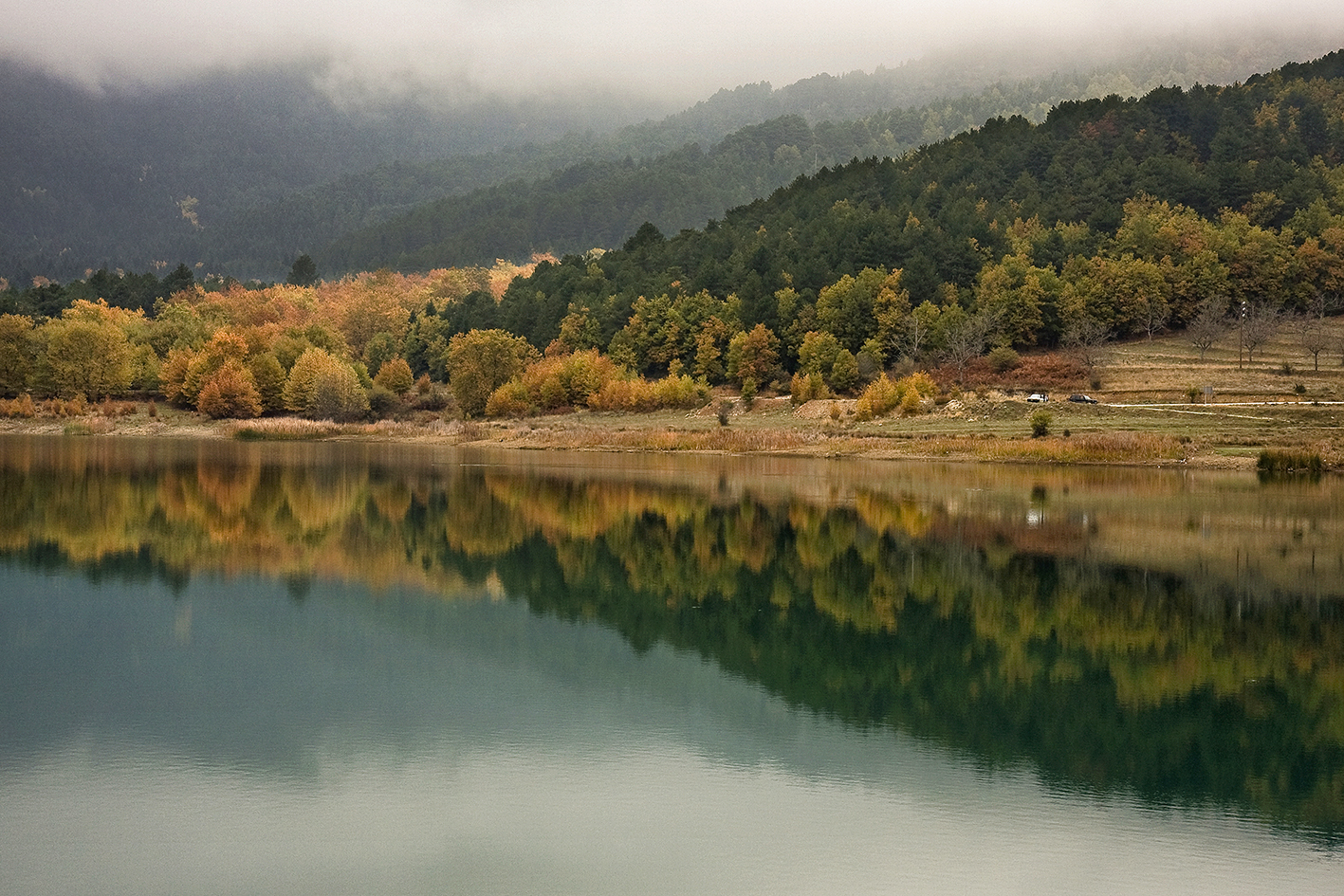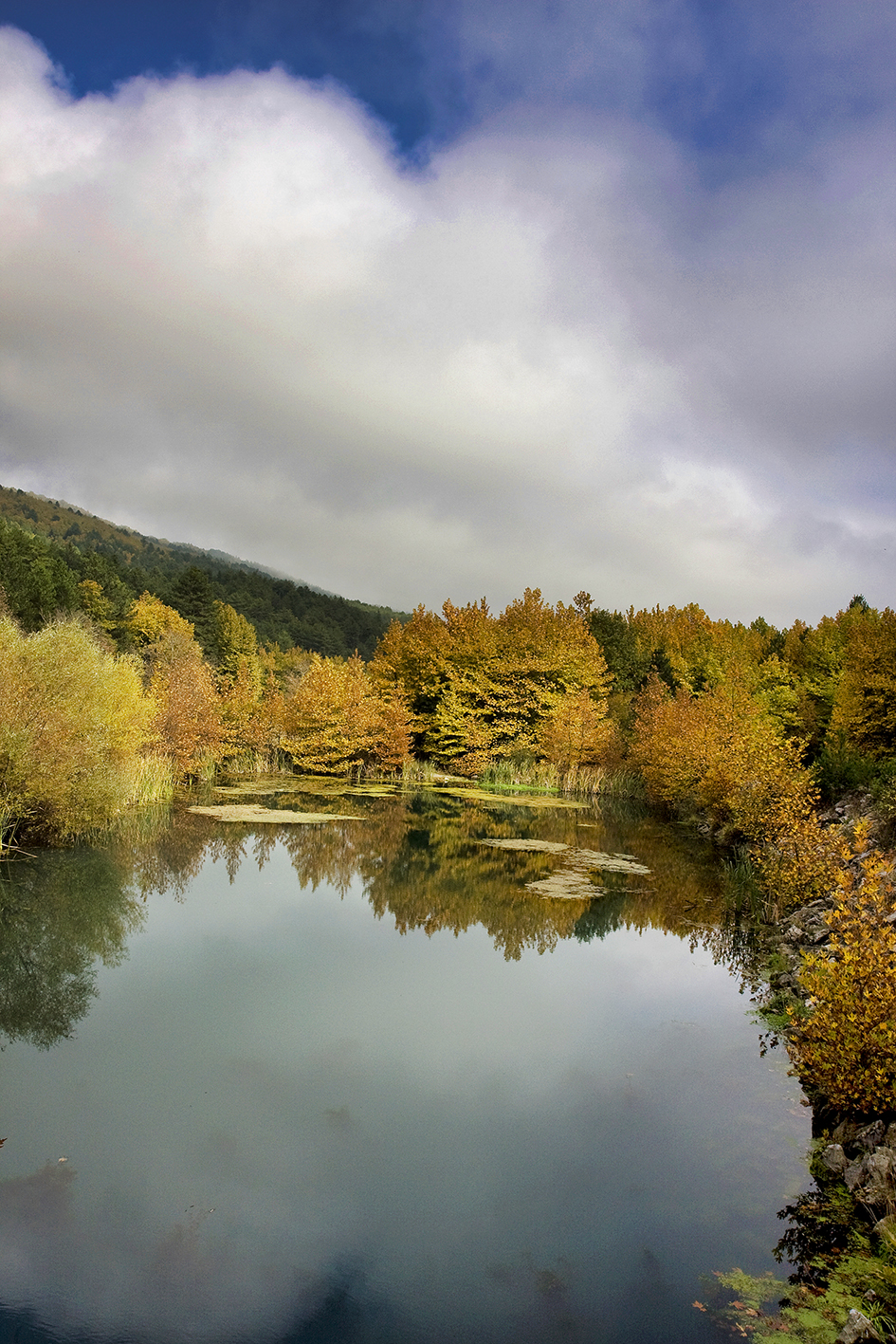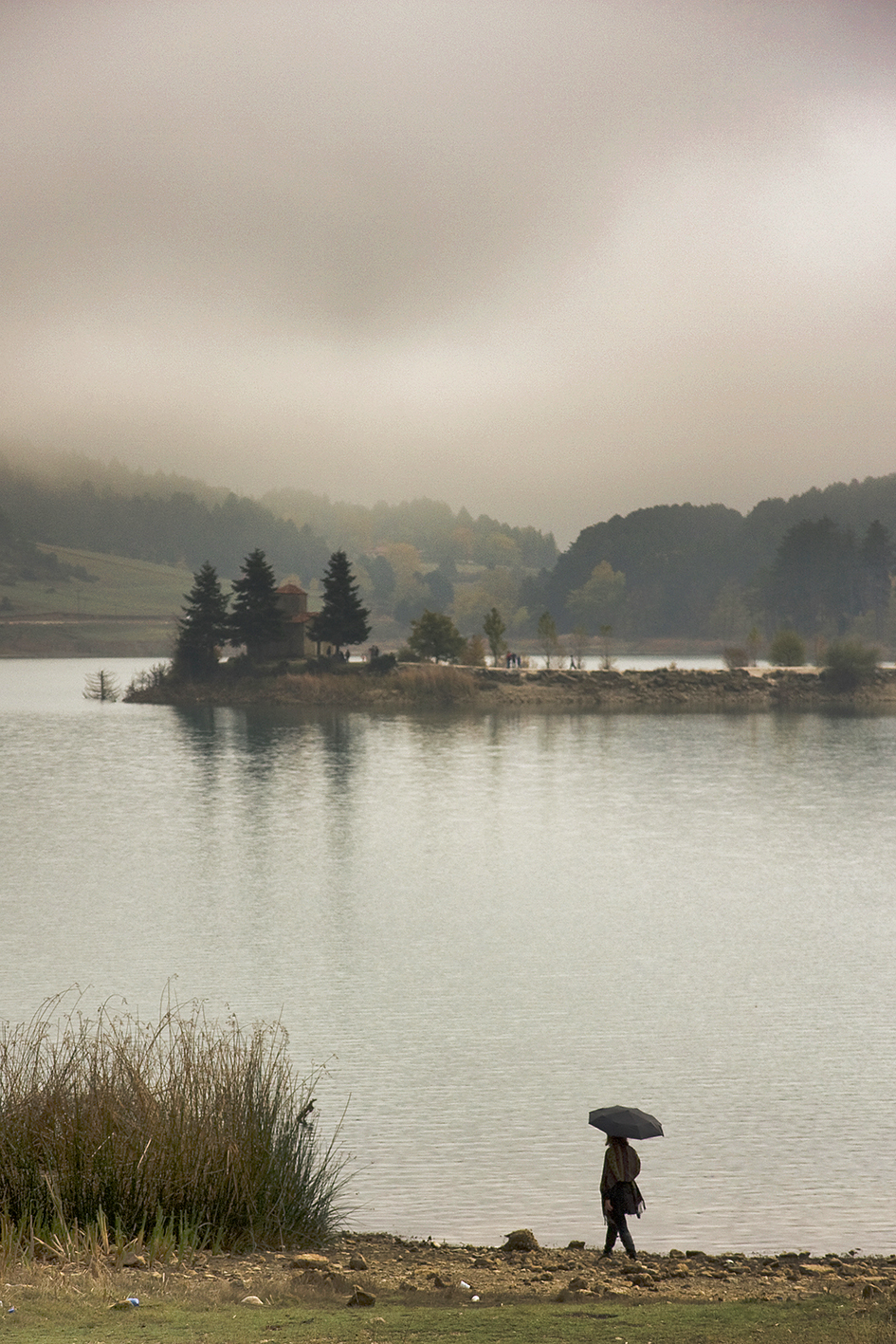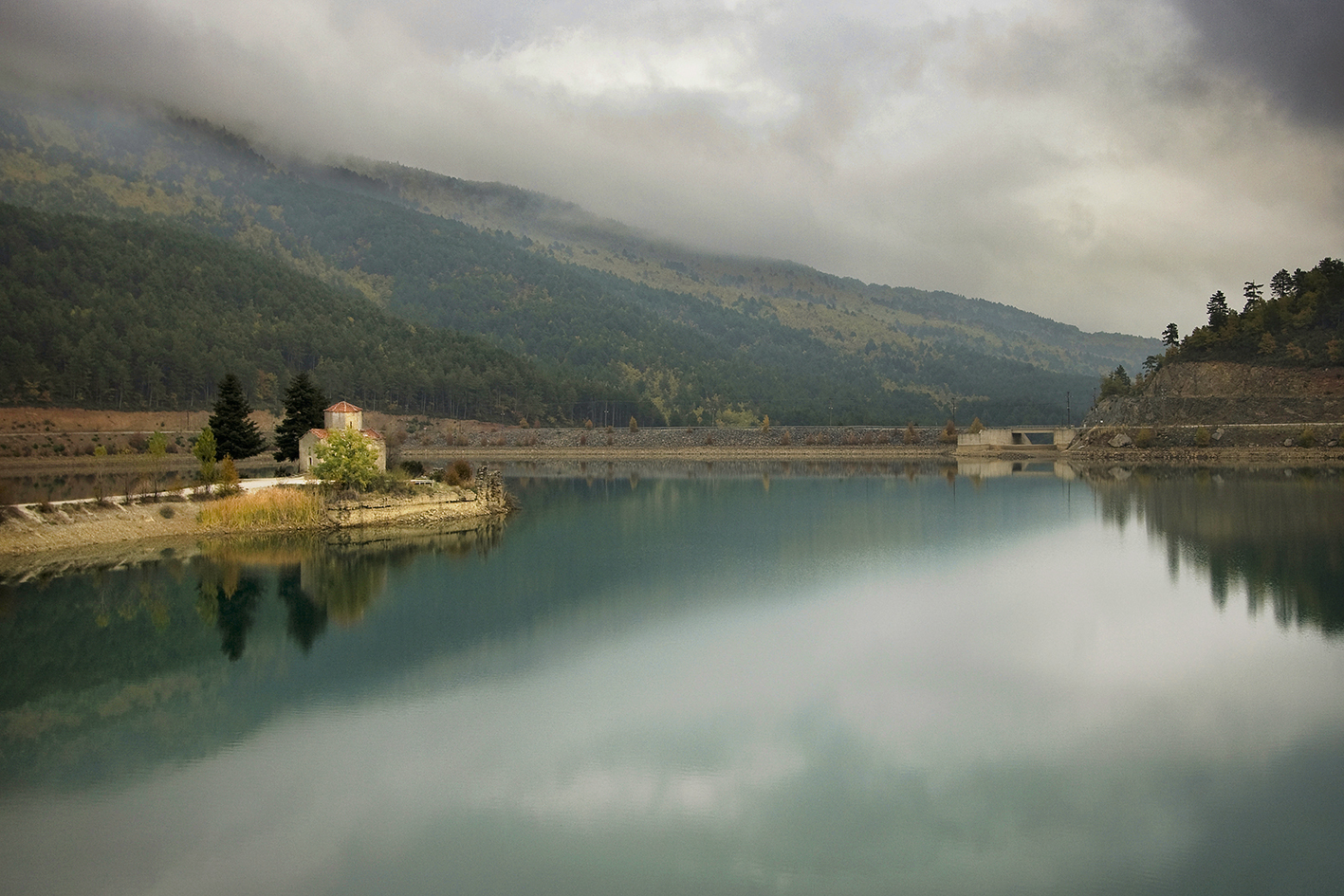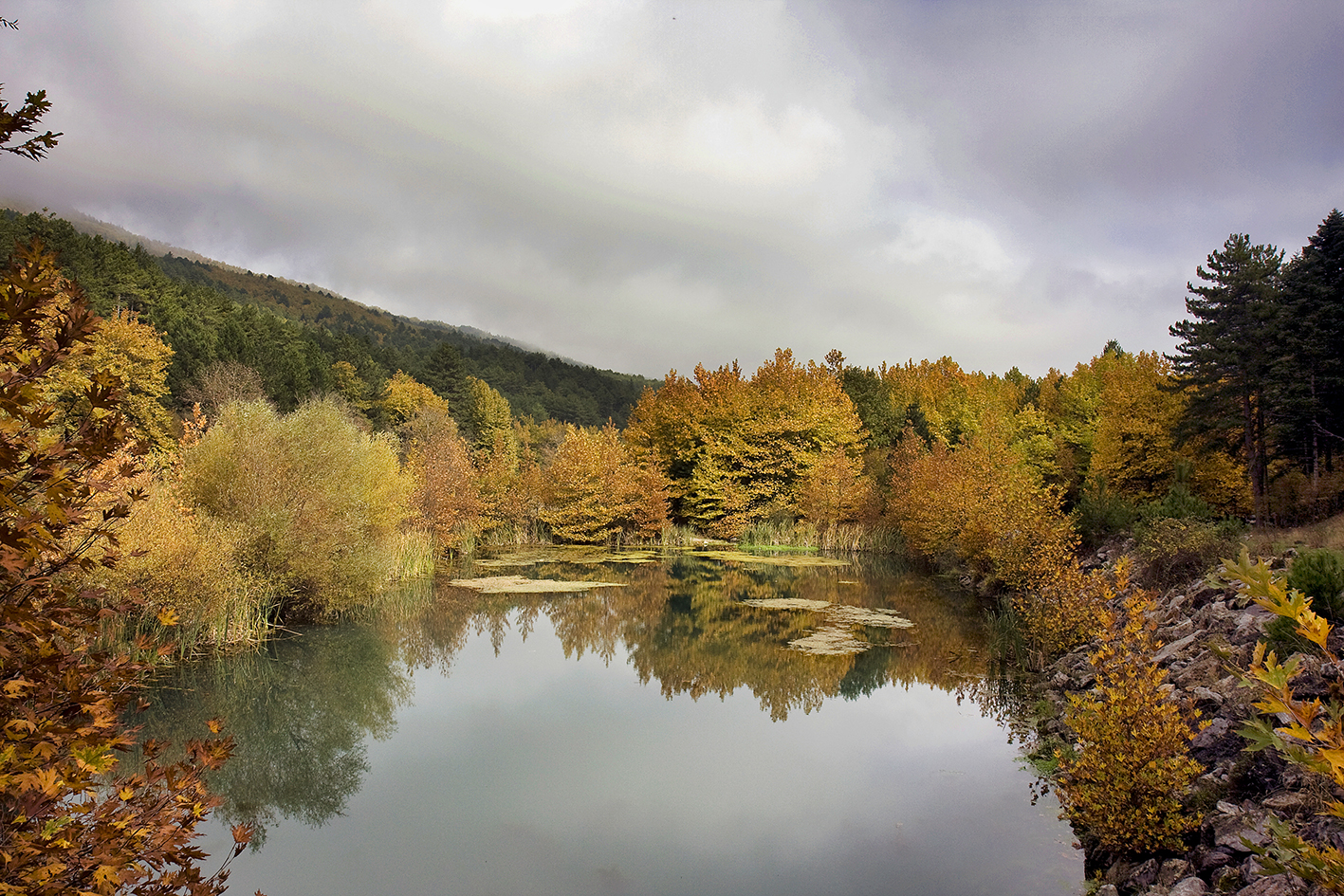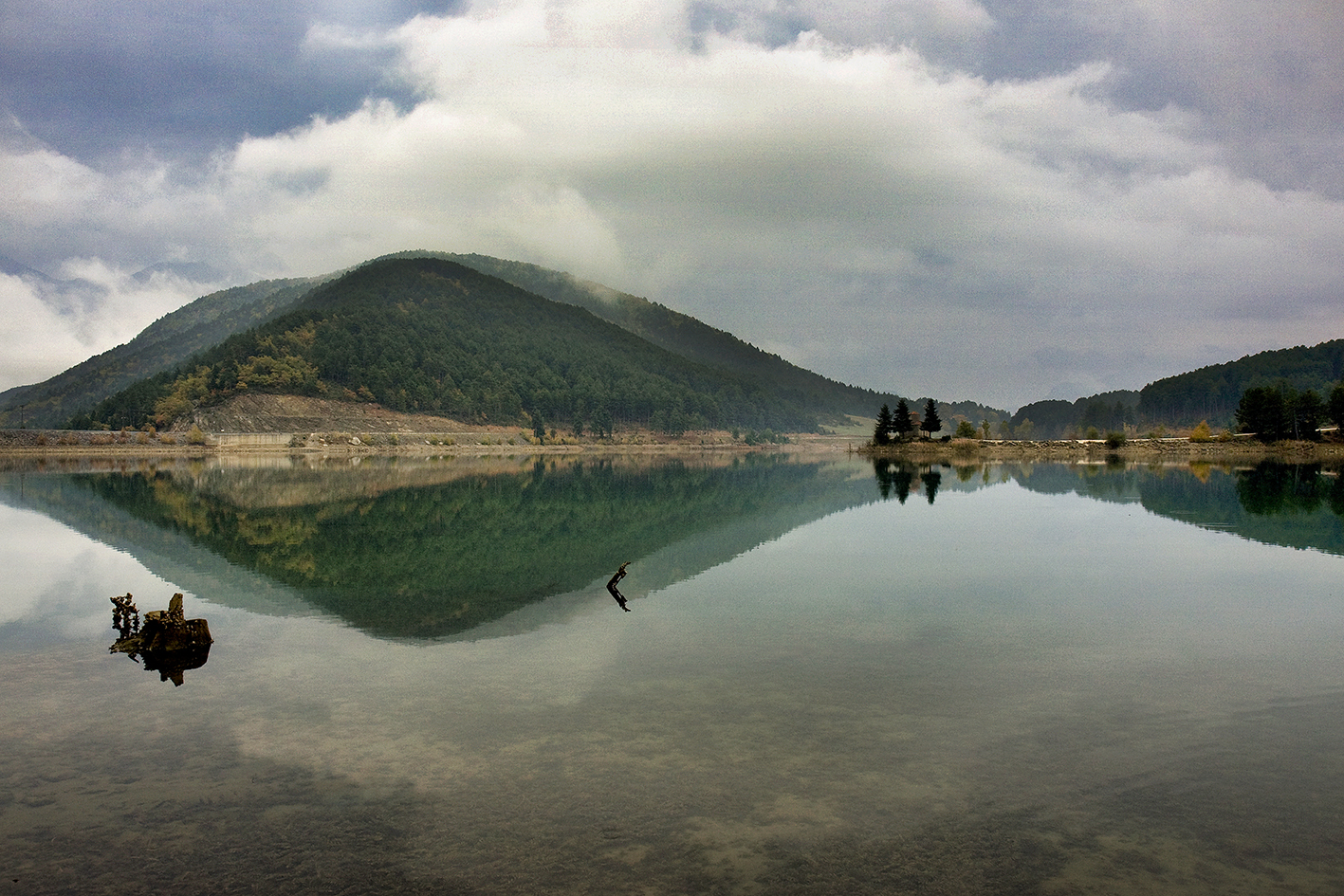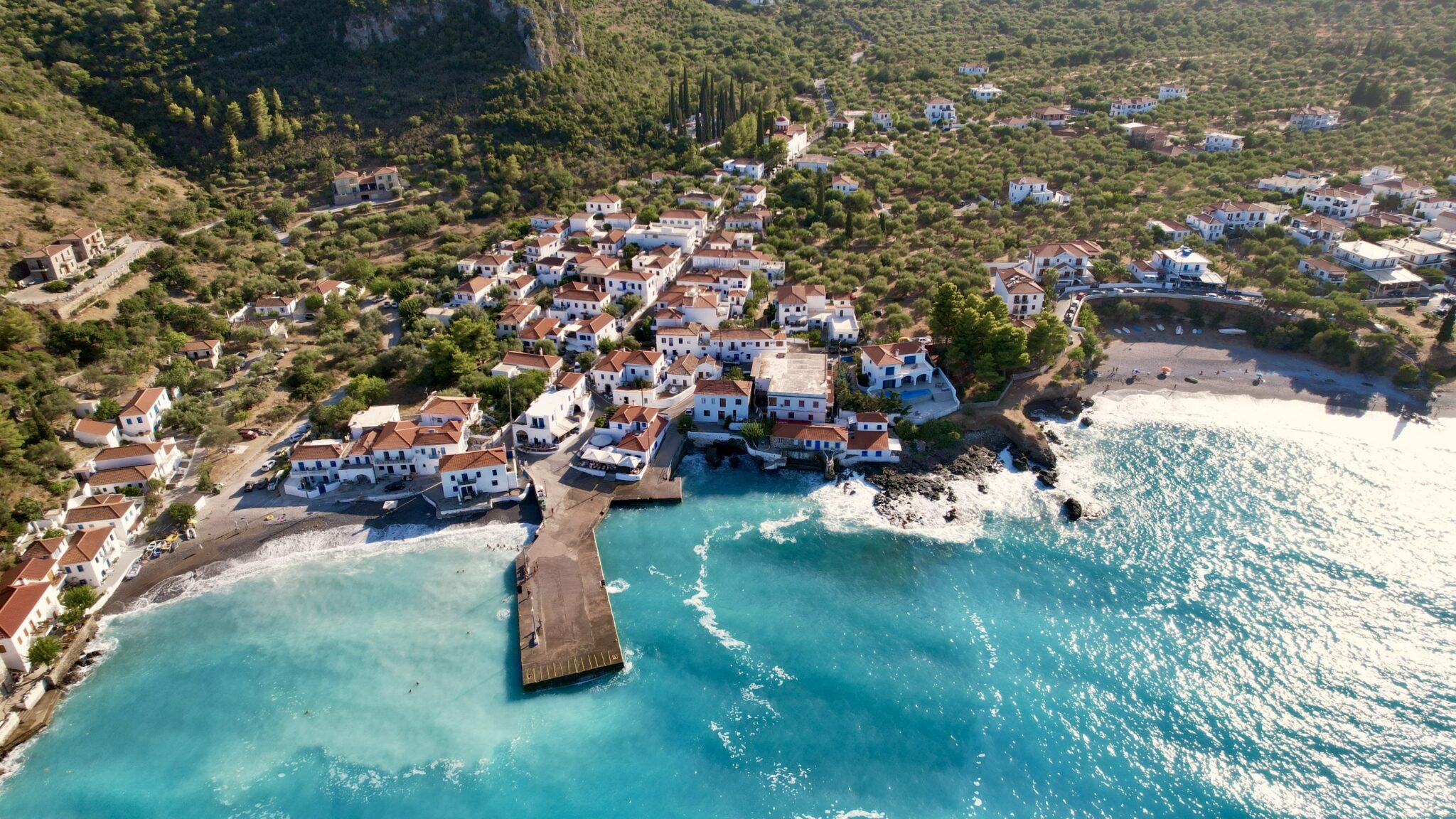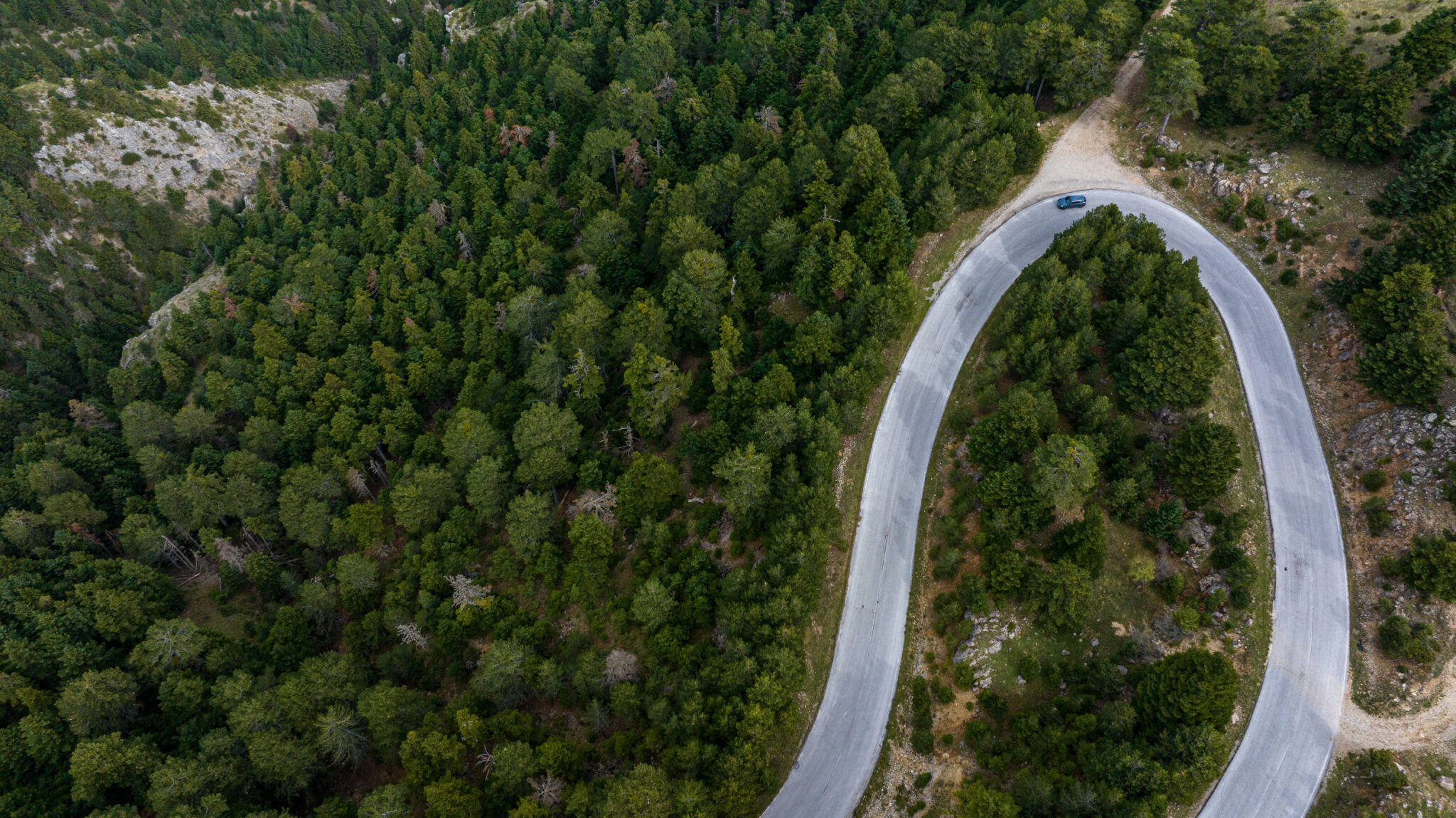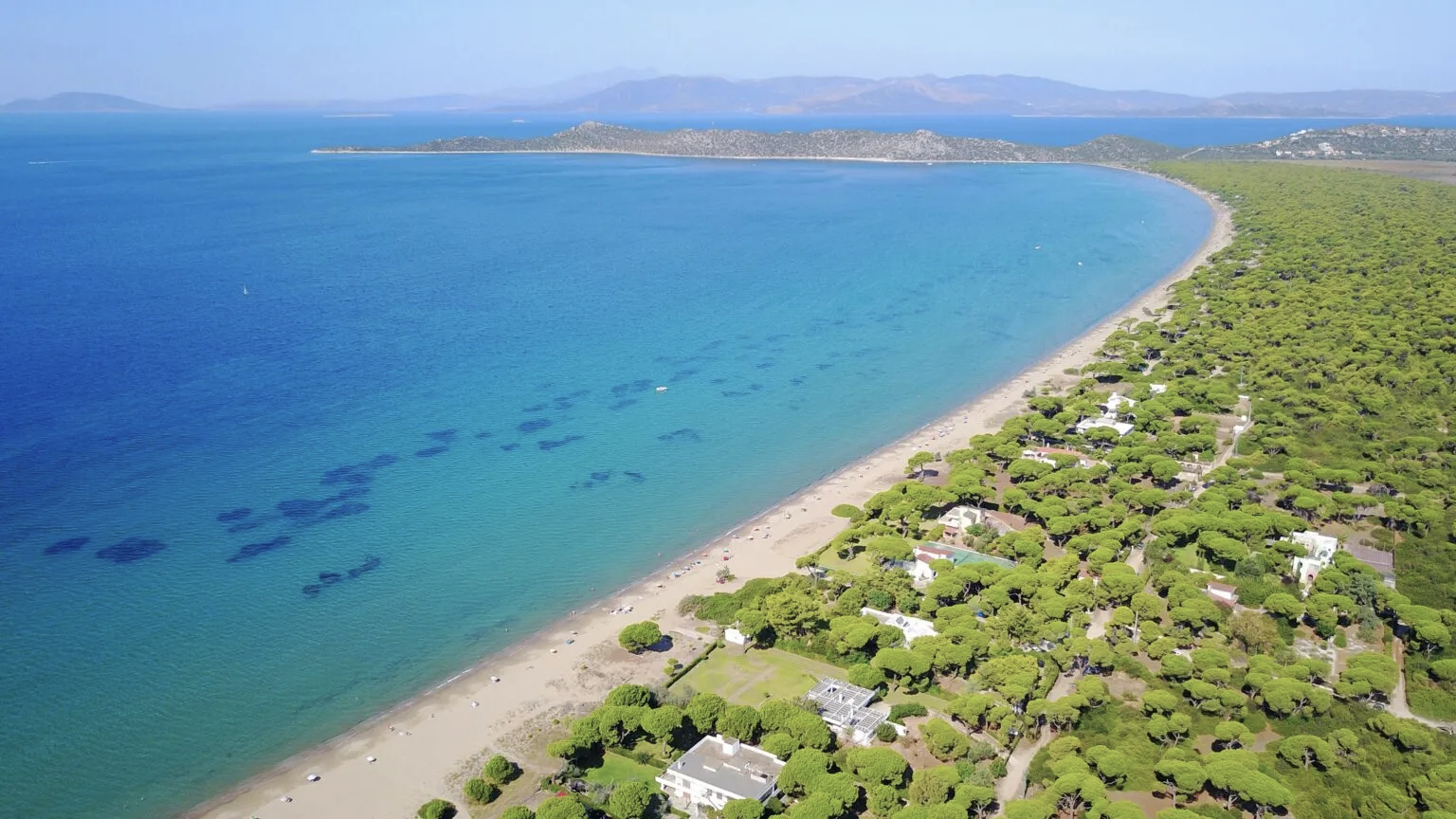Lake Doxa, an artificial lake 167km (100mi) west of Athens, was dammed in the late 1990s, and has been gaining in popularity with visitors over the past 10 to 15 years. Besides becoming an attraction, luring travellors in sizeable numbers all year round, Lake Doxa has also been declared a Natura reserve (protected eco-zone), testament to it having become a pristine habitat to regioanl flora and fauna and an area of great natural beauty.
The lake is wedged between the foothills of Mount Aroania, more widely known as Helmos, and Mount Dourdouvana, officially named Penteleia, in the mountainous municipality of Corinthia. This region is called Feneos, after the last village on the mountain and closest to the lake, a walkable 1.5km (1mi)
Goura, a neighbouring village (!0km, 6mi), at an altitude of 956m (3136ft), with, at last count, 231 residents making it the most populous village of the area, is the favoured stop-over for coffee or food following excursions to the lake.
Despite the fame it has enjoyed in recent times, people sometimes confuse Lake Doxa with Lake Feneos, a seasonal body of water to the south of the plateau. Lake Feneos’ waterline recedes almost entirely every summer only to get replenished in winter when the rains run off into its basin.
Some visitors are also unaware of the fact that Lake Doxa is an artificial lake that was created at the end of the last century, an ambitious project to dam a large section of the River Doxa creating a reservoir to improve irrigation on the plateau. Water from regional rivers flow into the lake, which covers an area of over half a square kilometre and impressively reaches a maximum depth of 40m (131ft).
The lake was named Doxa ‘glory’, after the name locals used to call the area and its main river., and according to local tradition, there were two hamlets here with similar names in the 17th century. They are believed to have been called Doxa and Doxia, or Apanou (Upper) Doxa and Kato (Lower) Doxa.
Background trivia aside, this arresting man-made attraction makes for an idyllic getaway, being described as the “Corinthian Switzerland” and prompting comparisons with the Alps of central Europe . Exaggerations, to be sure , but even so painting a picture that is not too far removed from reality. Bearing this in mind, Lake Doxa is one of the most remarkable lakes in the Peloponnese, along with Lake Tsivlos, in Achaia, also in the northern Peloponnese.
More daring adventurers like to make the breathtaking hike the 6.5km (4mi) to the Summit of Mount Dourdouvana for the panoramic vistas of the plateau and the mountain terrain beyond and/or swim and scuba-dive in chilly waters of the Lake. But mostly, visitors like to take lakeside strolls around the shore of the lake, go cycling along accessable routes and find a pleasant spot to enjoy a laid-back picnic. Agios Fanourios, the chapel, is at the tip of the penisular that extends into the heart of the lake, and can be reached by a dirt track. Geologists who have studied the area believe the neck of the penisular will eventually sink, meaning Agios Fanourios will one day stand on an islet within the lake.
Directions for Lake Doxa
Getting to Lake Doxa from Athens, is relatively simple, the drive takes approximately two hours. Take the Athens-Patras highway westwards then choose to take the drive up the mountain from either Kiatos or Derveni/Xylocastro. Visiting the lake and its environs is charming anytime you go,
but goung in autumn, when the weather is still somewhat mild and the surrounding forest offers a dazzling array of colours; fading green leaves melding into shades of yellow, red and orange. In Spring the lakes banks and the forest floor are carpeted with colourful wildflowers; soft purple cyclamen, pure white and yellow crocii and pink colchicum to name but a few.
Read also:
Lake Stymfalia: Mythical Greek lake waiting to be discovered



